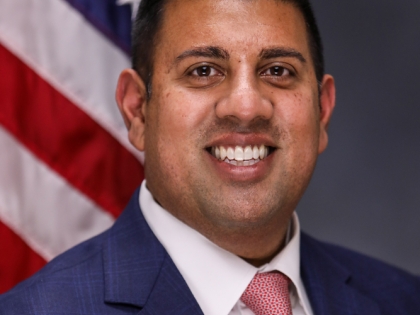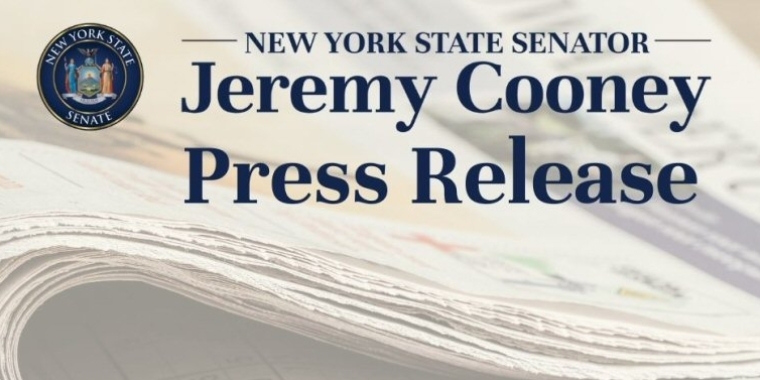
Senator Cooney, Assembly Member Joyner Introduce "Equity in Leave Act" as NY Disability Benefits Lag
December 13, 2023

Albany, NY – December 12 – New York State Senator Jeremy Cooney and Assembly Member Latoya Joyner today introduced the “Equity in Leave Act,” which would align the state’s antiquated disability benefit in New York with its more recent Paid Family Leave benefit through a phased-in approach that gives employers and employees time to adjust. They also released data showing that New York State now has the lowest cap on disability benefits among states that set requirements for business participation.
We can’t have a system that supports people taking care of new mothers and children or their sick loved ones, but doesn’t support them caring for themselves,” said Senator Cooney. “We must align the benefits for these two critical programs with a phased-in approach in order to keep our businesses competitive and reduce family financial strain by putting dollars in workers’ pockets.”
“If New York State is going to consider itself a progressive, national leader, it can’t be this behind in providing benefits for disabled workers,” said Assemblywoman Joyner, who chairs the Assembly Labor Committee. “We’re leaving New Yorkers behind, and we must align disability payments with those under Paid Family Leave using an approach to ensure all workers have the support they need to keep their families on track to generating wealth and our state competitive.”
Currently, payments through New York’s worker disability program are capped at $170 per week, a level that has remained stagnant since 1989. Utilization rates demonstrate that the current system disproportionately impacts women pre and post birth who make up more than 30 percent of disability benefit recipients, as well as workers injured off the job and those who have become ill. Benefits for Paid Family Leave, which support the individuals who care for the disabled, are capped at more than $1,000 per week.
The “Equity in Leave Act” aligns the benefits between the two programs over four years to create equity between those who are suffering from a disability and those who are caring for them. It also protects workers who go on disability or medical leave from being terminated for doing so.
For new mothers, this inequity often means that while New York intends to provide them with up to 20 weeks of paid leave, data shows that more than 40 percent of them forgo the low-paying disability benefits, cutting their time with their new child by as much as eight weeks. Women who experience a stillbirth can only receive $170-a-week in disability benefits and can never tap the higher-paying Paid Family Leave benefit. As a result, women facing complications in a pregnancy are often forced to choose between following a doctor’s advice to take time off and prioritize their health or continuing to work in order to pay the bills. For Black women, this can ultimately be a choice between life and death – Black women are three times more likely to die while giving birth than white women in New York State.
“Working New Yorkers deserve to have the option to properly prioritize their health and well-being when needed and our current disability benefits are simply too low to allow for that,” said Sherry Leiwant, Co-Founder & Co-President of A Better Balance. “As leaders of the efforts to enact Paid Family Leave in New York, we cannot ignore the significant disparity between the two programs and we feel our job is not finished until paid leave to care for your own medical needs is as sufficient as paid leave to care for a loved ones’, as outlined in the Equity in Paid Leave Act.”
Data released by the lawmakers today shows that while other states have acted to increase their disability benefit caps, New York’s inaction has led it to fall far behind the benefits set in other states that require the coverage. To date, 12 states, including New York, have programs that provide for disability benefits, with four more set to join the field in 2026. New York is the only state that has set a lower benefit for disability benefits than Paid Family Leave.
When New York last raised the cap on disability benefits in 1989, the average annual wage, according to the New York State Department of Labor, was $27,303. In 2021, the latest data available, it was $87,786, a 222 percent increase.. Instead, at $170 per week, they’re maxed out at the equivalent of a full-time wage of $4.25 per hour while the state’s minimum wage in 2022 ranged between $14.20 and $15 per hour, depending on location.
Meanwhile, in 2023, Paid Family Leave was capped at $1,131 per week. Under this system, a new mother who has a caesarean section and is recovering from surgery is entitled to a maximum of $170 per week, while their partner is eligible to up to $1,131 per week for caring for the newborn’s mother. By contrast, mothers in states outside of New York are earning between $765 and $1,619 per week while recovering from giving birth.
The Equity in Leave Act would solve this inequity by phasing in an increase to the cap with a one-year lead-up, putting an end to the current $170 weekly benefit and aligning the disability benefit cap with the cap for Paid Family Leave. Starting in 2026, the disability cap would be set at 50% of the average weekly wage, or about $844 per week, based on current calculations. In the second year, it would rise to 55%, or about $928 per week, and in 2028 it would rise to 60% of the state average weekly wage, or about $1,012 per week. In 2029, the disability benefit would be capped at 67% of the average weekly wage, or about $1,131 per week, with no further increases thereafter.
Furthermore, the Equity in Leave Act protects workers from being fired if they go on disability leave, similar to the protections provided under the Paid Family Leave Act.
###
Share this Article or Press Release
Newsroom
Go to NewsroomProposed Law Would Allow Cannabis Firms to Deduct Business Expenses
December 10, 2021


